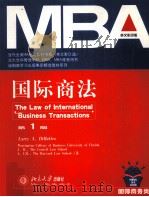《PETHINKING THE SOURCES OF INTERNATIONAL LAW》
| 作者 | 编者 |
|---|---|
| 出版 | KLUWER LAW AND TAXATION PUBLISHERS |
| 参考页数 | 322 |
| 出版时间 | 1983(求助前请核对) 目录预览 |
| ISBN号 | 9065440852 — 求助条款 |
| PDF编号 | 812895708(仅供预览,未存储实际文件) |
| 求助格式 | 扫描PDF(若分多册发行,每次仅能受理1册) |
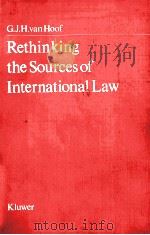
CHAPTER Ⅰ:GENERAL INTRODUCTION:STATEMENT OF THE PROBLEM AND METHOD OF STUDY1
PART Ⅰ:THE APPROACH TO THE PROBLEM OF THE SOURCES OF INTERNATIONAL LAW11
CHAPTER Ⅱ:THE CONFUSION OVER THE SOURCES AND THE NORMATIVE CONCEPT OF LAW13
CHAPTER Ⅲ:CONCEPT OF INTERNATIONAL LAW17
3.1Introduction:doctrine and the sources of international law17
3.2 Some aspects of the normative concept of international law:its function and functioning19
CHAPTER Ⅳ:THE NORMATIVE CONCEPT AND SOME BASIC APPROACHES TO INTERNATIONAL LAW29
4.1Introduction29
4.2 Legal idealism30
4.3 The analytical approach34
4.4 The sociological approach39
4.5The middle path of Structural Positivism44
4.5.1 Introduction44
4.5.2 The union of primary and secondary rules46
4.5.3 Structural Positivism and international law53
CHAPTER Ⅴ:CONCEPT OF SOURCES57
5.1The preliminary question of terminology57
5.2 Introduction61
5.3 Basic features of the international society61
5.4 The changes in the structure of international society65
5.5 The basis of the binding force of international law71
5.6 The constitutive element of rules of international law76
5.7 Manifestations of consent or acceptance;the impact of the changed structure of the international society81
PART Ⅱ:THE TRADITIONAL SOURCES OF INTERNATIONAL LAW83
CHAPTER Ⅳ:CUSTOMARY INTERNATIONAL LAW85
6.1Doctrine and customary international law85
6.2The nature of customary international law90
6.2.1 Introduction90
6.2.2Opinio juris and usus91
6.2.2.1 The so-called stages-theory91
6.2.2.2 Advantages of the stages-theory93
6.2.2.3 Questions concerning the change of customary international law97
6.2.3 Opinio juris;remaining issues106
6.2.4 Usus;remaining issues106
6.3 The declining role of custom as a source of international law113
CHAPTER Ⅶ:TREATIES117
7.1The proliferation of treaties117
7.2Shortcomings of treaties119
7.2.1 Introduction119
7.2.2 Problems of acceptibility120
7.2.3 Problems of adaptation124
7.2.4 The shift of the content of international law;the relation between conduct, law and policy126
7.2.5 Problems of change128
CHAPTER Ⅷ:GENERAL PRINCIPLES131
8.1The continuing debate on the general principles131
8.2 The denial of the existence of the general principles as a source of international law132
8.3The meaning of the phrase "general principles of law recognized by civilized nations"133
8.3.1 Introduction133
8.3.2The genesis of article 38 (1)(c)135
8.3.2.1 A preliminary question135
8.3.2.2 The work of the 1920 Avisory Committee of Jurists136
8.3.3The general principles within the framework of the International Court of Justice139
8.3.3.1 Introduction139
8.3.3.2 General principles on the basis of reception from municipal legal systems140
8.3.3.3 General principles through induction from existing rules of international law143
8.3.3.4 The limited use by the international Court of Justice of the gereral principles as a source of international law144
8.3.4 The general principles outside the framework of the International Court of Justice146
8.3.5 The distinction between general principles in the procedural and in the material sense148
8.3.6Excursus:Jus Cogens151
8.3.6.1 Introduction151
8.3.6.2 The hierarchy of rules of international law151
8.3.6.3 The basis of international jus cogens153
8.3.6.4 The concept of jus cogens in international law154
8.3.6.5 Indentification and validity of norms of international jus cogens156
8.3.6.6 Change of norms of international jus cogens166
CHAPTER Ⅸ:ARTICLE 38:SUBSIDIARY MEANS FOR THE DETERMINATION OF RULES OF LAW169
9.1Judicial decisions169
9.2 Teachings of the most qualified publicists of the various nations176
CHAPTER Ⅹ:SOME CONCLUSIONS:THE MOVEMENT TOWARDS "OTHER SOURCES" AND THE "SOFT LAW" APPROACH179
PART Ⅲ:TENTATIVE REFORMULATION OF THE DOCTRINE OF SOURCES193
CHAPTER Ⅺ:PRELIMINARY ISSUES195
11.1Can the sources of international law change?195
11.2 The formless character of international law199
CHAPTER Ⅻ:FIVE PROJECTED CLASSES OF MANIFESTATIONS OF CONSENT OR ACCEPTANCE:GENERAL OBSERVATIONS205
12.1Introduction:points of departure205
12.2 International law-making as a continuous process206
12.3 The relation between the classes of manifestations of consent or acceptance and the traditional sources of international law208
12.4 The relation between the various classes of manifestations of consent or acceptance inter se209
12.5 The role of international organizations210
12.6 The producer-consumer distinction212
CHAPTER ⅩⅢ:OUTLINE OF THE INDIVIDUAL CLASSES OF MANIFESTATIONS OF CONSENT OR ACCEPTANCE215
13.1Introduction215
13.2 Abstract statements216
13.3Travaux préparatoires lato sensu219
13.3.1 Introduction219
13.3.2 Circumstances of preparation and adoption221
13.3.3The decision-making process224
13.3.3.1 Introduction224
13.3.3.2 The increased use of the consensus-technique226
13.3.3.3 The nature of the consensus-technique227
13.3.3.4 Non-voting229
13.3.3.5 Non-objection231
13.3.3.6 Thoroughness233
13.4The text234
13.4.1 Introduction234
13.4.2Substantive provisions235
13.4.2.1 Introduction235
13.4.2.2 The type of language employed235
13.4.2.3 The content of a rule239
13.4.2.4 The relation with existing rules of international law240
13.4.2.5 Excursus:a concrete exemple;the question of the existence of international legal obligations concerning Official Development Assistance242
13.4.3Qualifying provisions247
13.4.3.1 Introduction247
13.4.3.2 The name of an instrument248
13.4.3.3 Preambular paragraphs249
13.4.3.4 Final clauses251
13.5Follow-up256
13.5.1 Introduction256
13.5.2Enforcement,supervision,follow-up258
13.5.2.1 The review-function258
13.5.2.2 The correction-function258
13.5.2.3 The creative-function261
13.5.2.4 Development of the law263
13.5.3 Follow-up with respect to formally binding rules265
13.5.4 Follow-up with respect to formally non-binding rules270
13.6 Subsequent practice275
13.7 Summary279
CHAPTER ⅩⅣ:CONCLUDING REMARKS281
BIBLIOGRAPHY295
INDEX309
1983《PETHINKING THE SOURCES OF INTERNATIONAL LAW》由于是年代较久的资料都绝版了,几乎不可能购买到实物。如果大家为了学习确实需要,可向博主求助其电子版PDF文件(由 1983 KLUWER LAW AND TAXATION PUBLISHERS 出版的版本) 。对合法合规的求助,我会当即受理并将下载地址发送给你。
高度相关资料
-

- THE SOURCES OF LAW IN THE SWISS CIVIL CODE
- 1923 OXFORD UNIVERSITY PRESS
-
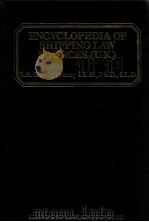
- ENCYCLOPEDIA OF SHIPPING LAW SOURCES
- 1985 LLOYE'S OF LONDON PRESS
-
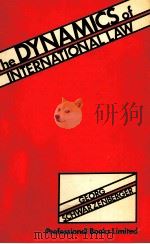
- THE DYNAMICS OF INTERNATIONAL LAW
- 1976 PROFESSIONAL BOOKS LIMITED
-

- THE INTERNATIONAL LAW OF RECOGNITION
- 1951 STEVENS & SONS LIMITED
-

- THE DEVELOPMENT OF INTERNATIONAL LAW BY THE INTERNATIONAL COURT
- 1958 STEVENS & SONS LIMITED
-

- THE CHANGING STRUCTURE OF INTERNATIONAL LAW
- 1964 STEVENS & SONS
-
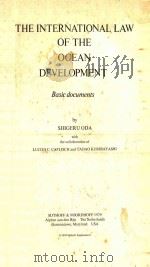
- THE INTERNATIONAL LAW OF THE OCEAN DEVELOMENT
- 1979 COPYRIGHT
-

- The International Law of the Sea
- 1994 Dartmouth
-
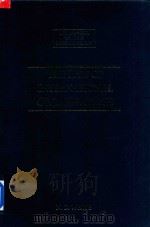
- The Law of International Organisations
- 1996 Manchester University Press
-
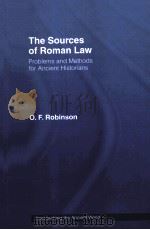
- THE SOURCES OF ROMAN LAW
- 1997 LONDON AND NEW YORK
-
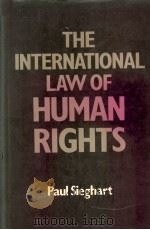
- The international law of human rights
- 1983 Clarendon Press
-
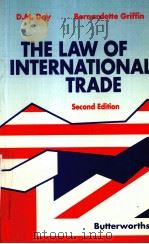
- The Law of International Trade
- 1993 Butterworth-Heinemann
-

- THE ELEMENTS OF INTERNATIONAL LAW
- 1967 THE DORSEY PRESS
-
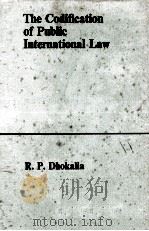
- THE CODIFICATION OF PUBLIC INTERNATIONAL LAW
- 1970 MANCHESTER UNIVERSITY PRESS
提示:百度云已更名为百度网盘(百度盘),天翼云盘、微盘下载地址……暂未提供。➥ PDF文字可复制化或转WORD
